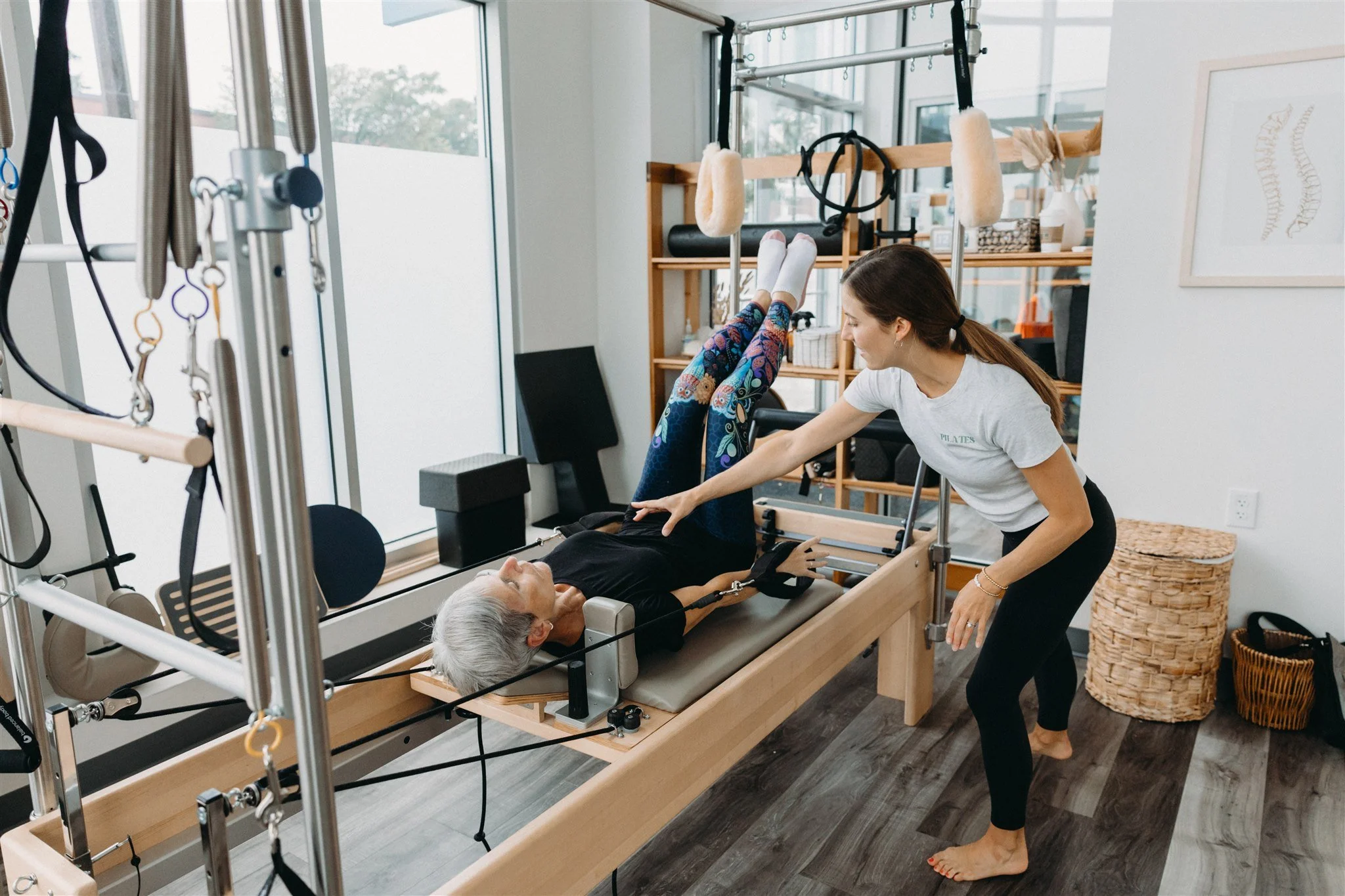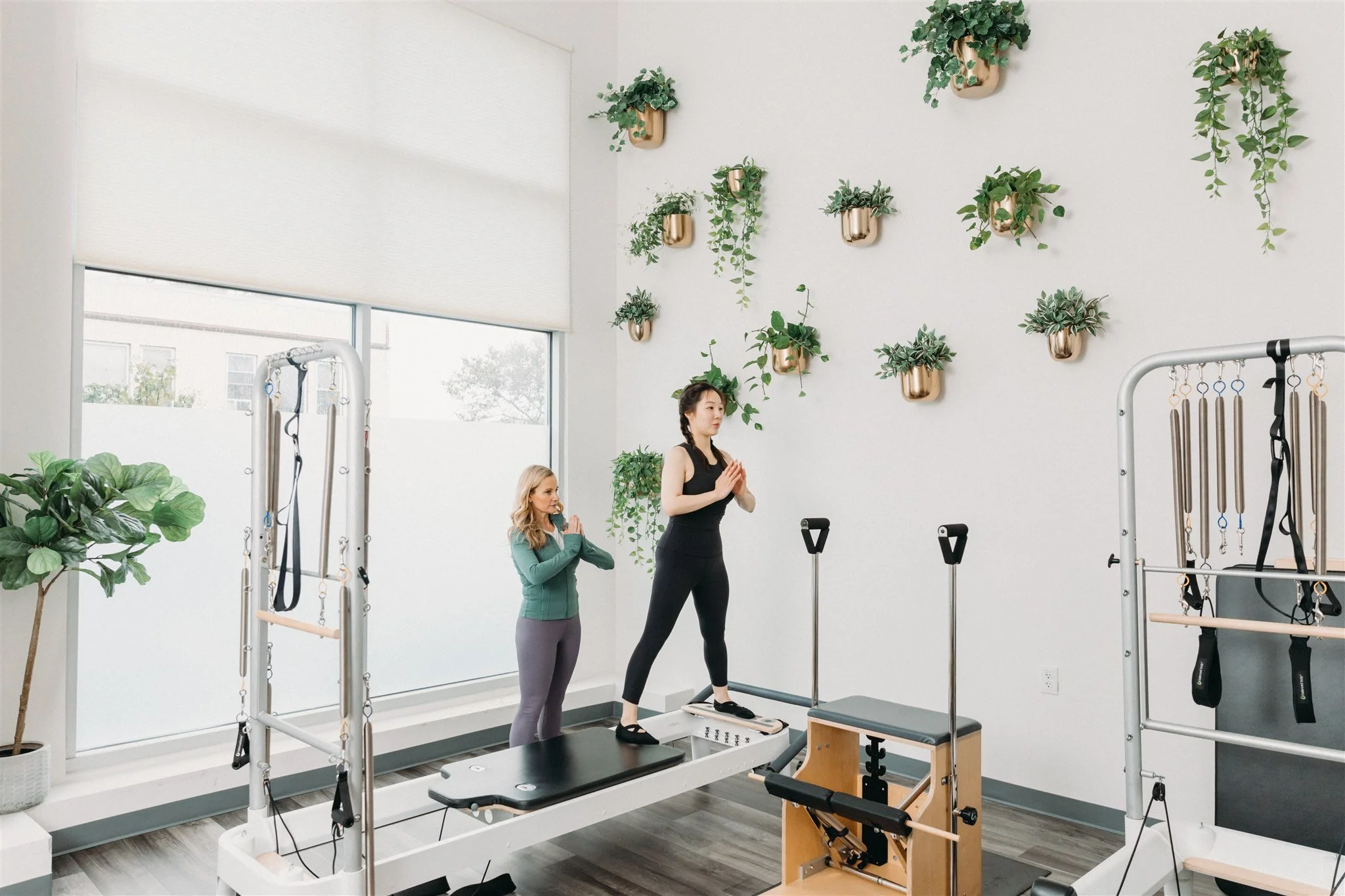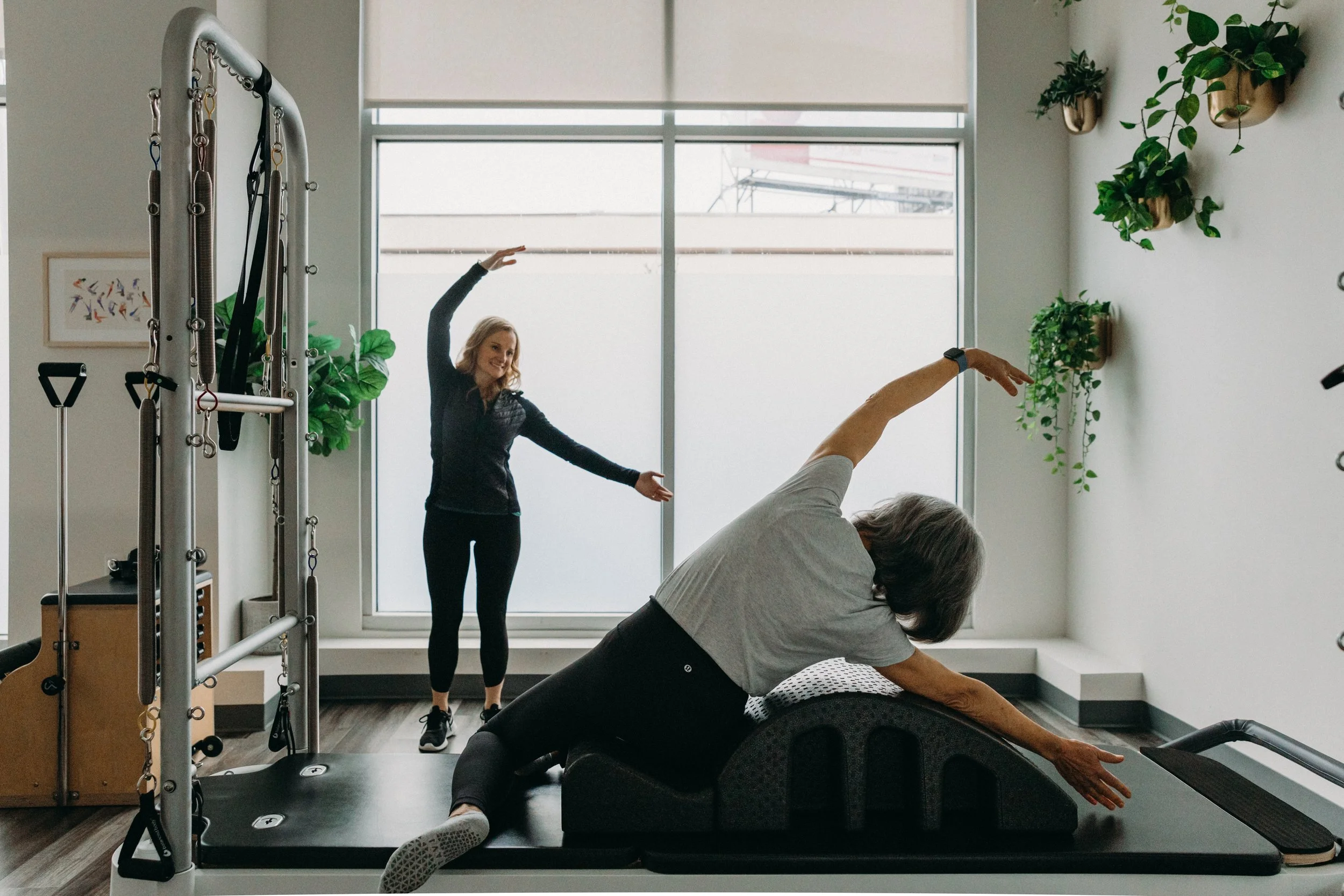How to improve chronic inflammation with pilates:
Inflammation is a vital process that helps protect the body from injury and supports natural healing. However, when inflammation becomes excessive or persists for too long, it can turn into chronic inflammation, leading to serious health problems. While inflammation is commonly linked to conditions such as arthritis and allergies, its impact extends much further. Research has shown that chronic inflammation may be an underlying cause of most chronic health issues, including mental health disorders, dementia, heart disease, respiratory conditions, diabetes and even cancer. Keep reading to learn more about inflammation and discover how Pilates can be used as an essential tool in managing chronic inflammation and preventing disease!
What is inflammation?
When your body senses harm or infection, the immune system triggers a series of reactions to protect and heal the affected area. This process, known as inflammation, is the body’s natural defense mechanism in response to injury. Inflammation will often lead to additional side effects which may include swelling, pain and temporary loss of function in the affected area. To further explain inflammation we can use an example of getting a splinter. The splinter itself is not causing the swelling, pain or redness in the area, rather it is your body’s immune response to help keep us safe and trigger healing. When the body is injured or fighting off an infection, chemicals like cytokines and prostaglandins are released, causing blood vessels to expand. This allows white blood cells to quickly reach the affected area to fight off pathogens and promote healing. This natural process, known as acute inflammation typically lasts only a few days. However unlike acute inflammation chronic inflammation can linger for weeks, months, or even years. Chronic inflammation is often triggered by factors such as sedentary lifestyle, prolonged periods of stress, poor nutrition, inadequate sleep, and exposure to environmental toxins, all of which lead to excessive inflammation. While chronic inflammation may not always cause noticeable symptoms initially, over time, it can silently damage tissues and organs, significantly raising the risk of developing other serious health issues.
Inflammations role in exercise:
Inflammation is a crucial part of muscle growth during exercise. When you work out, small tears form in the muscle fibers, triggering an acute inflammatory response. This natural process delivers essential nutrients and repair cells to the damaged area, promoting healing and strengthening the muscles over time. As the muscles repair and rebuild, they become more resilient, better equipped to handle future physical challenges. However, when workouts lack proper structure and recovery time, chronic muscle inflammation can develop. This often happens with repetitive routines that overwork the same muscle groups without adequate rest. Overuse not only leads to decreased neuromuscular function and strength but also contributes to oxidative stress - a condition where free radicals outpace the body’s ability to neutralize them. This imbalance can cause muscle wasting and increase the risk of injury. Properly balancing exercise intensity and recovery is key to avoiding these harmful effects.
Symptoms of chronic muscle inflammation:
So, how can you tell if your workouts are causing chronic muscle inflammation?
Some common symptoms of chronic muscle inflammation:
Muscle Weakness
Extreme fatigue
Disproportionate pain and tenderness
Joint stiffness
Skin irritation or breakdown
**If you are experiencing any of these symptoms we recommend consulting your primary care provider for a complete evaluation to rule out any other conditions as well!
4 Tips for Managing Chronic Inflammation!
Prioritize quality sleep: Sleep is an essential part of the body’s recovery process. Therefore, aiming for 7-9 hours of sleep a night will allow your muscles to repair and reduce inflammation.
Minimize stressors: Chronic stress can increase inflammation in the body, therefore practicing stress management techniques like mindfulness and mediation can help reduce cortisol levels. Pilates, with its focus on breath work, further enhances relaxation, offering a whole-body approach to managing stress.
Follow an anti-inflammatory diet: By focusing on nutrient rich anti-inflammatory foods like leafy greens, berries, fatty fish and nuts you can help lower your risk of chronic inflammation. Reducing your intake of ultra processed foods, added sugars and trans fat will help support long-term health.
Incorporate pilates into your exercise regimen: Pilates combines principles of mobility, control, dynamic alignment, movement integration, and breath, making it an ideal workout to manage chronic inflammation while building overall strength. Pilates is a great way to focus on intentional and controlled muscle activation while minimizing joint impact. This approach reduces the risk of overuse injuries and chronic inflammation, allowing your body to build strength and mobility in a safe way!





